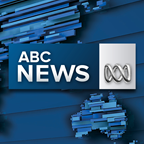
Efforts by bank regulators to curb a surge in lending to property investors in the last year appear to be having some effect, the Reserve Bank says.
Double-digit house price growth in Sydney over the last year had prompted warnings of a potentially dangerous asset-price bubble, and risks of a shock to the economy should it burst.
The Sydney house price jump, which was also strong in Melbourne, prompted the Australian Prudential Regulation Authority, to tighten standards around lending to property investors at the start of the year.
Growth in credit to housing investors had grown to around half of all mortgage lending. Regulatory moves to stymie strong house price growth have also been seen recently in countries like Canada, the UK, and New Zealand.
“Members noted that very low interest rates would continue to support growth in dwelling investment and household consumption,†the RBA said in the minutes of its September 1 policy meeting.
“There were indications that the measures implemented by APRA had slowed the growth in lending for investment housing,†the minutes said.
“There had been a notable decline in the growth in lending for investment housing in July,†the RBA minutes added.
Earlier this year, the Treasury Department said an asset-price bubble had formed in Sydney, with Governor of the Reserve Bank of Australia Glenn Stevens saying some of the leverage being taken on by borrowers in Sydney for housing was “crazy.â€
If the new curbs on mortgage investors continue to work, concerns about the need for potential additional APRA lending curbs will abate. If house price growth can slow nationally, it will also remove a hurdle to further interest rate cuts.
Interest rates were lowered to a record low of 2.0 per cent in May as the RBA reacted to slowing economic growth and falling commodity prices.
Recent data showed the economy grew at its slowest pace in four years in the second quarter, amid fresh warnings that Australia might soon slide into recession, its first in close to 25 years.
For now, the RBA maintains a neutral tone on the outlook for interest rates, repeating its recent mantra that future rate decisions will be made as economic data and conditions are assessed.
“It was appropriate to leave the cash rate unchanged (at the policy meeting),†the RBA said.
Still, the RBA said recent falls in the Australian dollar, would provide some support to the economy.
The Australian dollar has fallen by more than 25 per cent in the last year, removing a major headwind to the economy.
“The depreciation of the Australian dollar in response to the significant declines in key commodity prices was also expected to support growth, particularly through a larger contribution from net service exports,†the minutes said.
Resource exports are expected to add a lot more to the economic outlook over coming years, especially as new liquefied natural gas plants start production, it added.
The RBA was also watchful, but not too concerned about recent volatility in China’s currency and share markets, amid ongoing signs of an economic slowdown.
“So far, this volatility had not impaired the functioning of other financial markets and funding remained readily available to creditworthy borrowers,†the RBA added.
Dow Jones






 Add Category
Add Category